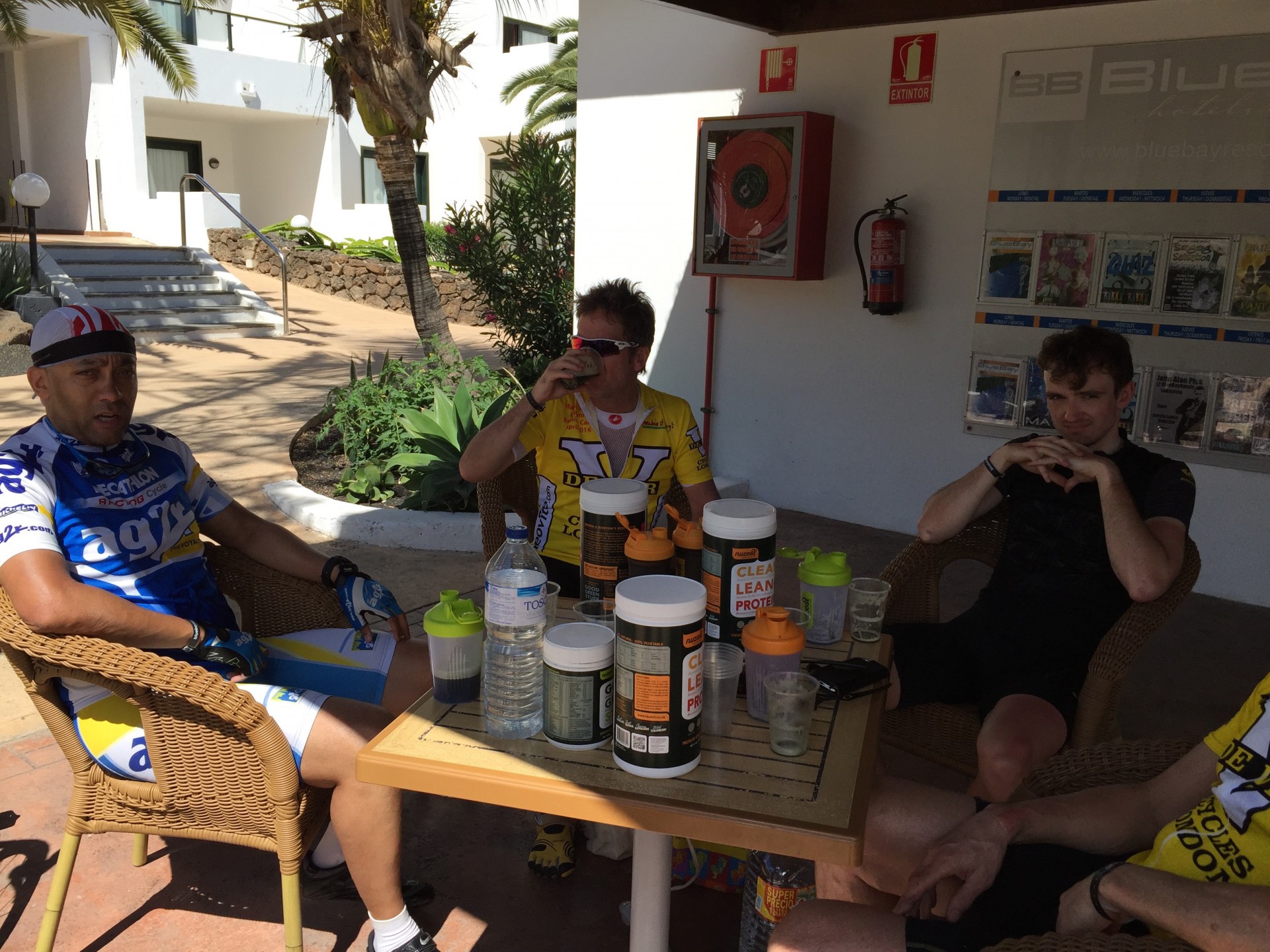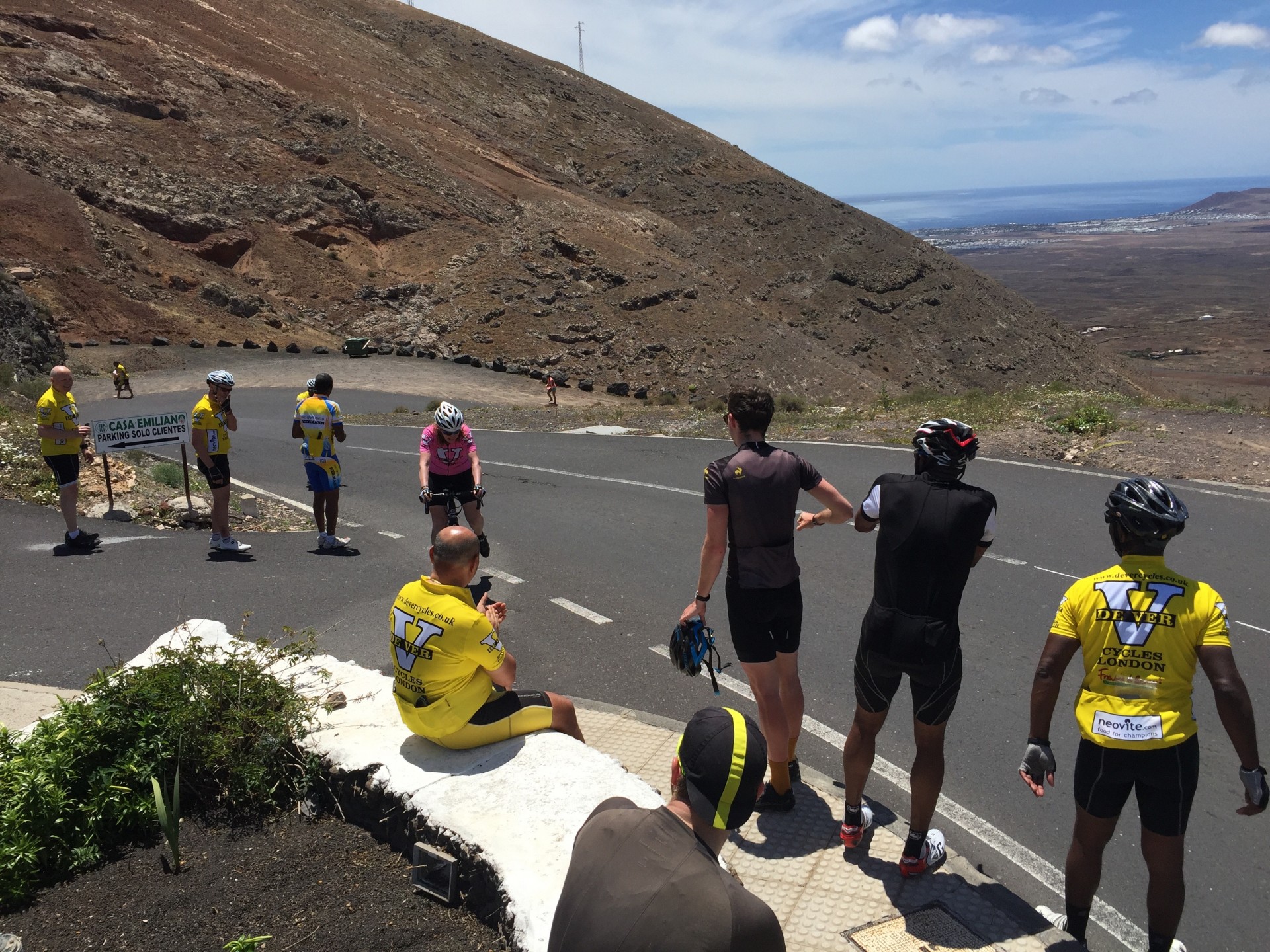Content Sections
Rob Verkerk PhD, founder, executive & scientific director
The coming of spring in the northern hemisphere heralds a time of increased human activity. Many of us emerge from a period of lower activity over the winter months, encouraged by warmer weather and longer days.
UK statistics from the British Heart Foundation show that around 20% of men and 30% of women are considered largely ‘inactive’, these ratios more or less reflecting the prevalence of obesity in UK society. The flip side to this is that around 60-70% of men and 50-60% of women meet the UK government recommendations for physical activity published in 2011. These require adults to include:
- at least 150 minutes (2.5 hours) of moderate to strenuous activity each week
- some moderate to strenuous physical activity every day
- strength training twice per week
But if you’ve got your sights set on doing a marathon or 100 mile (160 km) bike ride, you’ll need to extend your training well beyond the minimum requirements set in government guidelines. Since our goals vary and we’re all different both genetically and in terms of our given fitness, many people benefit from having a structured training plan prepared by a personal trainer. Unfortunately there are relatively few personal trainers who are up-to-speed with the latest science on how to make your approach to eating and nutrition benefit you most.
In this piece, we stress four aspects that could help you improve your performance in any forthcoming endurance activity you might be planning.
- Optimise your body composition
- Improve your fat burning capacity
- Improve your muscular power and efficiency
- Manage oxidative stress and inflammation in your body
1. Optimise your body composition
The first step is to ensure that your muscle and fat percentages are at least in the normal range. The easiest way of finding this out is to use a body composition scales that uses bioelectrical impedance to estimate such as things as muscle mass, % body fat and % water content. If you simply lose weight by eating less, there is a real risk that you will actually get fatter! This happens because you run the risk of losing muscle and gaining relatively more fat. Tanita is one of the main manufacturers of body composition scales and you can pick up a decent body composition scale for £60-135 (€77-175). The more expensive end offers segmental analysis so that you can check the composition of different parts of your body as well as measuring such things as visceral (internal) fat, bone mass and estimating your biological age.
Below are some healthy ranges for body fat as collated by Tanita.

Source: Tanita
If you don’t have or can’t access a body composition scale – or get a DEXA scan by a doctor or other qualified health practitioner (the gold standard for assessing body fat) – you should be able to access a tape measure. With this very simple device, you can take a measurement of your waist and your height. If your waist to height ratio exceeds 0.5, you are carrying too much weight around your middle or trunk. This weight, referred to as ‘central adiposity’, is also the most dangerous weight to carry in terms of your risk of metabolic diseases like heart disease and type 2 diabetes.
As you lose fat, you’ll recognise that corresponding increases in the amount of lean muscle tissue are key to your ability to perform efficiently. Putting it succinctly, your power to weight ratio will improve - and that's key to efficient endurance performance. If you have access to a body composition scale, you want to aim for a healthy (i.e. low) visceral (internal) fat level and a muscle mass that puts you well and truly into the average to muscular range for your age and gender.
This of course is a lot easier said than done for many people. It also takes effort and time, the latter being particularly hard to come by for many of us. It often means some very good planning is needed. That might include building in exercise time before work (when your cortisol ‘waking’ or ‘stress’ hormone is naturally at its highest), or perhaps walking or cycling to work. It may include attending some activity classes or taking up a new form of exercise or sport that appeals. Another very useful addition can be body weight training. In our office, we’re fans of the Azumio Fitness Buddy app that runs off a mobile phone, but there are numerous other bodyweight apps that allow you to do guided 10-30 minute activities that will help you build a stronger core, as well as arms and leg muscles, quickly.
2. Improve your fat burning capacity
If we eat sugars and refined carbs at regular intervals, our bodies literally forget how to burn fat. That’s because our bodies will burn glucose in preference to body fat mainly because sugars (e.g. berries, other fruits, honey), from a human evolutionary standpoint, were meant to be occasional foods, not foods we are surrounded by 24/7.
Caloric restriction (especially when minimising simple carbs), coupled with intermittent fasting and fasted training are among the best ways of getting your fat burning (beta-oxidation) system to kick in.
We’ve written extensively on this in the past, and you’ll find useful articles here and here.
Among the most important things to take into account are:
- Minimise loading up on high carb ‘gels’ or ‘goos’ when training. Bear in mind it takes around 90 minutes of exercise to burn your muscle and liver glycogen (stored glucose) reserves; your body won’t switch to burning fat as the main fuel until after this point so longer bouts of moderate intensity activity are ideal for fat burning
- It may take several weeks or months of training to be able to do this seamlessly. If you readily become hypoglycaemic (i.e. suffer from blood-sugar crashes) when training without carb support, it is likely that you are not yet adapted to burning fats and you may need to persevere for longer with lower levels of physical exertion. We suggest you always carry a carb gel or drink with you, in case you ‘hit the wall’ while training and can’t otherwise get yourself back to base.
- Avoid snacking between meals, and don’t eat more frequently than once every 5 hours
- Exercise or train twice weekly in the morning on an empty stomach (‘fasted training’)
- Follow the ANH Food4Health plate general eating guidelines and help your body to adapt to ‘nutritional ketosis’ at least for parts of most days.
- Consume about 20 grams of high quality, non-allergenic protein (e.g. pea protein isolate) within a 1-hour window of completing bouts of intensive or prolonged exercise in order to provide the resources for muscle repair and building.

Rob Verkerk and other cyclists downing pea protein isolate and other nutrients after a
106-mile cycle around Lanzarote at the De Ver Cycles Training Camp, April 2016
You may also wish to read Drs Jeff Volek and Steve Phinney’s books, the “Art and Science of Low Carb Living” and the “Art and Science of Low Carb Performance”.
If an academic paper is more to your liking, Drs Volek, Noakes and Phinney’s 2015 review paper, “Rethinking fat as a fuel for endurance exercise” may prove useful bedtime reading.
3. Improve your muscular power and efficiency
Frailty is a major factor contributing to premature death in the elderly. As we age, most people tend to exert themselves less and muscle mass is lost and muscles get weaker, leading to age-related muscle wasting or sarcopenia.
Mostly, we think of this muscle wasting as an inevitable consequence of ageing, but most studies that examine this have looked only at sedentary older adults. An interesting and very relevant study of master athletes undertaken at the University of Pittsburgh and published in 2011 shows that if we keep exercising into our 80s, we can maintain almost the same muscle mass as an active person in their 40s. It seems therefore that the muscle wasting that is so common in older adults isn’t an inevitable consequence of ageing. Instead, it’s the result of chronic disuse of muscles. There’s one simple remedy: stay active throughout your life!!
Critical to this process is ensuring that your mitochondrial reserve (mitochondria being the energy-generating organelles in our muscle and other cells) is maintained.
Supporting the notion that regular and prolonged physical activity, caloric restriction and intermittent fasting are part and parcel of a normal lifestyle of a human being, these all contribute to improved body composition, fat burning and muscular power.
One more take-home, don’t sit for more than one hour at any time!
4. Manage oxidative stress and inflammation in your body
It would be easy to write a book on this subject. But we’re going to keep it very simple, recommending both an eating plan, namely the ANH Food4Health plate guidelines which are rich in antioxidants and anti-inflammatory foods, and a few supplements for which there is a rapidly growing body of evidence. These are vital to help the body’s recovery and repair following exercise. A failure to address these issues can lead to years of intense and prolonged exercise accelerating, rather than slowing, the ageing process, a feature that has been noted with some professional athletes.
When we exercise, our body produces elevated levels of free radicals or ‘reactive oxygen species’ (ROS). These have the potential to damage DNA, cells and tissues, resulting in premature ageing and increased risk of certain diseases. Our bodies are well adapted to this and so have developed a complex system of internal antioxidant defences including superoxide dismutase (SOD) and glutathione peroxidase (GPx).
In a healthy body supported by a healthy diet, the cofactors required to help support this endogenous antioxidant system are there. But there is some evidence that dietary antioxidants and anti-inflammatory ingredients can also be very helpful.
These include:
- ‘Eat a rainbow’ – consume veg and fruits from all 6 phytonutrient colour groups
- Foods and/or supplements rich in vitamins A, C and E (all 8 isomers), as well as the minerals selenium and zinc
- Dietary flavonoids (e.g. from green tea extract, proanthocyanidins in berry fruits)
- Turmeric root extracts containing curcuminoids and essential oils (to be consumed along with dietary fats to enhance absorption)
- Boswellia serrata (frankincense) extracts
Motivate others by telling us via our Facebook page what physical challenges you’ve undertaken or are working towards in 2016.

Cheering on cyclists as they appear at the top of the Femes climb, De Ver Cycles Training
Camp, Lanzarote April 2016, in which Rob Verkerk rode 260 miles between 20-24 April.








Comments
your voice counts
There are currently no comments on this post.
Your voice counts
We welcome your comments and are very interested in your point of view, but we ask that you keep them relevant to the article, that they be civil and without commercial links. All comments are moderated prior to being published. We reserve the right to edit or not publish comments that we consider abusive or offensive.
There is extra content here from a third party provider. You will be unable to see this content unless you agree to allow Content Cookies. Cookie Preferences